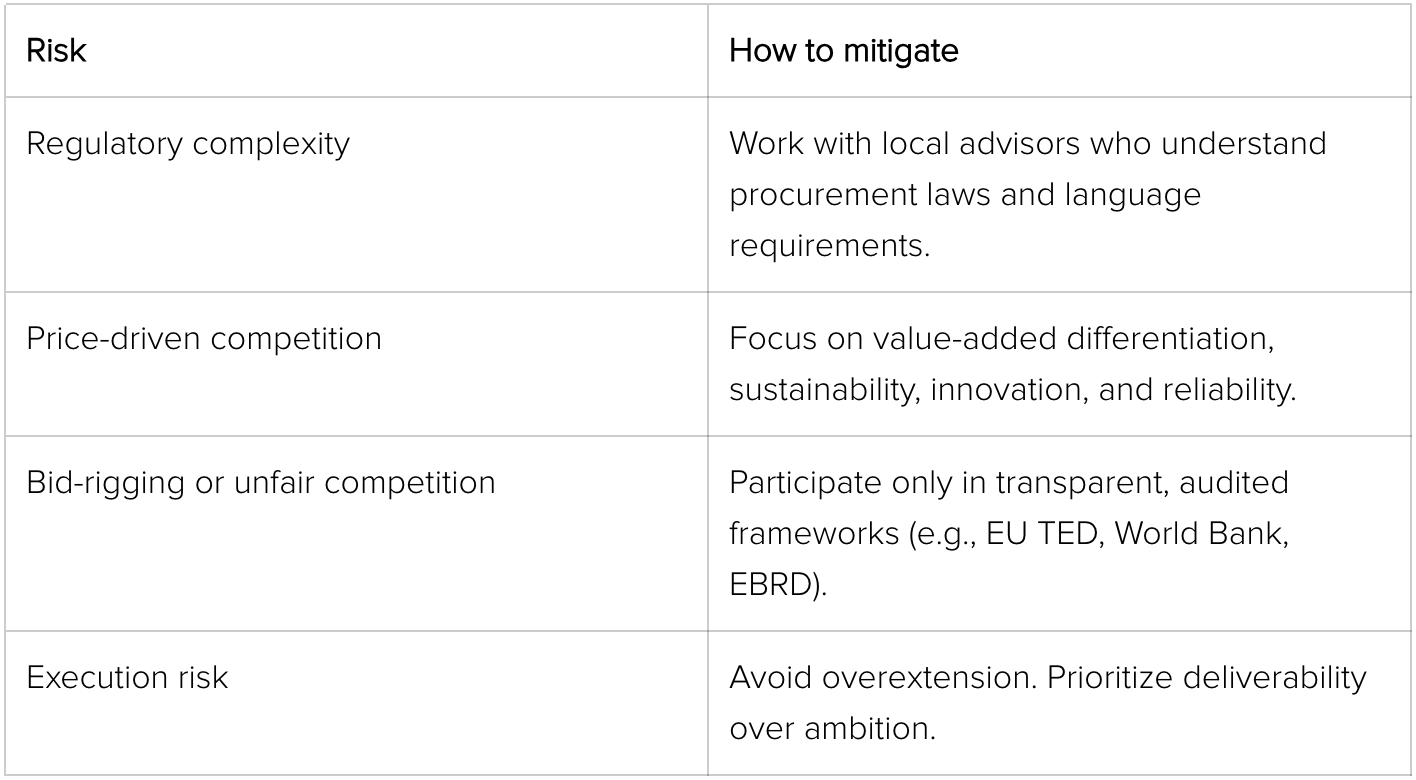
In the global race for growth, one of the most underestimated tools for market expansion isn’t marketing or partnerships. It’s public procurement (tenders). Tenders, or public procurement processes, are how governments, development banks, and international institutions allocate billions of euros every year. And for companies ready to play strategically, they’re a powerful gateway to new markets, trusted clients, and long-term revenue streams.
Why tenders are not just bureaucracy
Many businesses avoid tenders, associating them with endless paperwork and slow processes. But in reality, they offer three major advantages:
- Access to stable, high-value contracts: Public projects often come with multi-year budgets and guaranteed payments. One successful bid can secure your company’s financial stability for years.
- Reputation and credibility: Winning a government or international tender instantly raises your company’s profile. It signals reliability and compliance, crucial for entering new regions.
- A structured path to international expansion: Unlike private deals, tenders are transparent and open to foreign bidders. That means a company from Spain, Poland, or Ireland can directly compete and win in other EU countries.
The strategic process behind tender success
Winning tenders is not about luck, it’s about process and positioning.
Here’s a practical roadmap:

Using tenders as an entry point to new markets
Tenders can serve as your bridge into a new geography. Here’s how:
- Start with open-access countries: The EU, UK, Canada, and many emerging markets publish tenders openly. These are ideal for companies with proven track records but no local presence yet.
- Leverage consortia and partnerships: Joining forces with a local partner helps you meet eligibility requirements and share operational risk.
- Target pilot projects first: Smaller contracts, like digital transformation pilots or infrastructure assessments, will help you build references and credibility.
- Map opportunities 12-24 months ahead: Tenders follow predictable cycles. By tracking budgets and procurement plans, you can prepare long before the announcement.
- Invest in tender infrastructure: Create templates, a knowledge base, and a small internal team or consultant network. This drastically increases your success rate and reduces the cost of bidding.
Potential risks and how to avoid them

Case example
A Polish technology company developing energy management software wanted to expand into the EU. Instead of opening offices across multiple countries, it started by participating in a smart-grid modernization tender in Central Europe.
By partnering with a local utility provider and receiving bid support from consultants, the company won the contract, a project worth €2.4 million. That first success opened the door to three more cross-border opportunities.
Tenders became not just a sales channel, but a growth strategy.
The bigger picture
Global tenders are not reserved for large corporations. Small and medium-sized enterprises (SMEs), startups, and innovative tech firms are increasingly winning projects that shape infrastructure, sustainability, and digital transformation across Europe.
What they all have in common:
- a clear positioning,
- professional documentation, and
- a systematic approach to bidding.
Advisory firms like CSV Group specialize in helping companies prepare competitive applications and structure projects to meet EU-level criteria by bridging the gap between opportunity and execution.

Final thought
In an era where capital is cautious and organic growth is slow, tenders offer a different path, one built on transparency, scale, and credibility.
Winning one isn’t about filling out forms. It’s about building trust, demonstrating capability, and claiming your place in global recovery and innovation.


.svg)


